
Database Auditing in CosmosDB for PostgreSQL: Secure and Monitor Your Data

Data breaches in the United States have skyrocketed more than sevenfold over the past decade, climbing from 447 incidents in 2012 to over 3,200 in 2023. This dramatic surge highlights why database auditing has become crucial for organizations using CosmosDB for PostgreSQL.
Understanding Database Auditing and Sensitive Data Discovery
Database auditing serves as your organization’s security backbone. It monitors and records database activities, helping protect sensitive information from unauthorized access. When working with CosmosDB for PostgreSQL, proper auditing becomes essential for maintaining data integrity and compliance.
Modern database environments require comprehensive monitoring solutions. Organizations must track user activities, data modifications, and access patterns. This helps identify potential security threats and ensure regulatory compliance.
Identifying Critical Data for Audit Purposes
Finding the right data to audit requires a strategic approach. Organizations should focus on several key areas:
Sensitive customer information needs constant monitoring. Financial records require special attention to maintain compliance. Employee data must be protected to prevent unauthorized access.
Third-party security tools enhance native auditing capabilities. DataSunrise offers advanced features that complement CosmosDB’s built-in functionality. Together, they create a robust security framework.
Implementing Auditing Solutions with Native tools
Native tools provide basic auditing capabilities.
Native database auditing in CosmosDB for PostgreSQL relies primarily on the PGAudit extension. Additionally, CosmosDB provides a web-based interface with built-in auditing configuration tools, which we will explore in detail below.
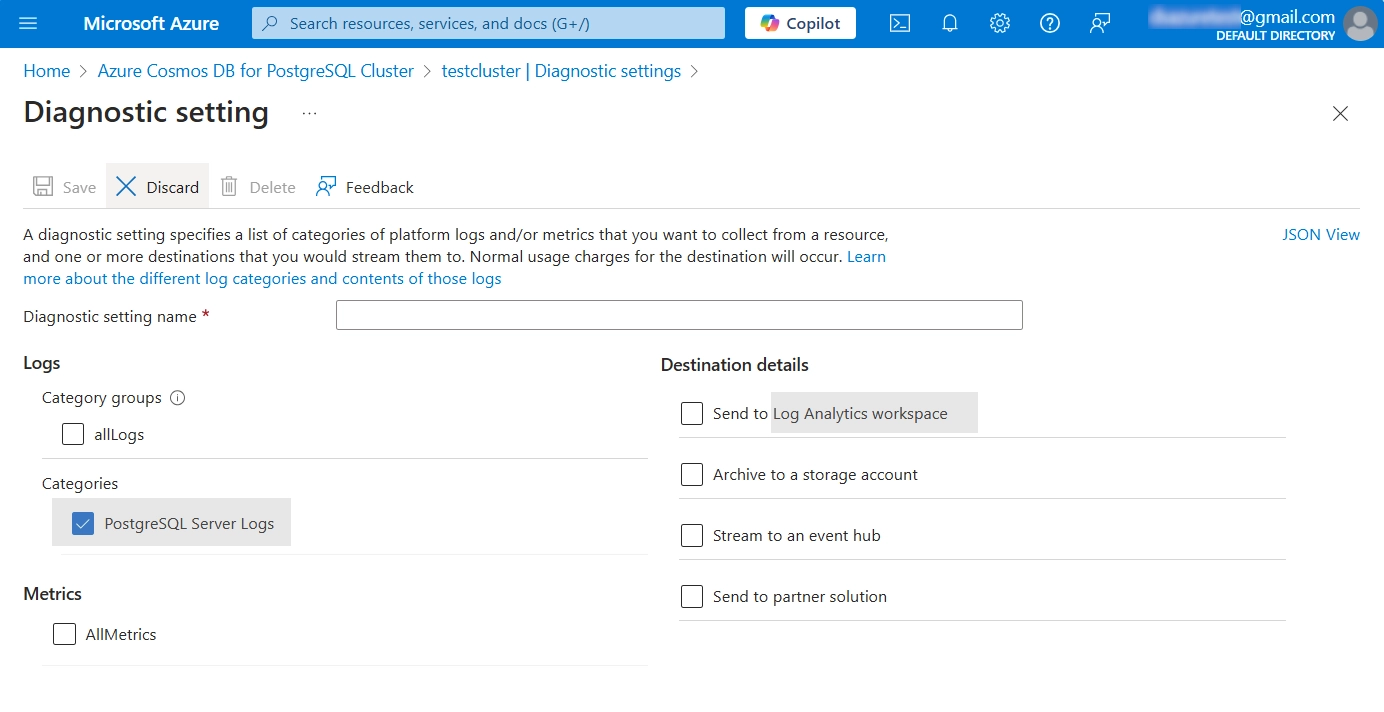
The Audit diagnostic settings look as follows in the list. Note that it is possible to add more diagnostic settings.
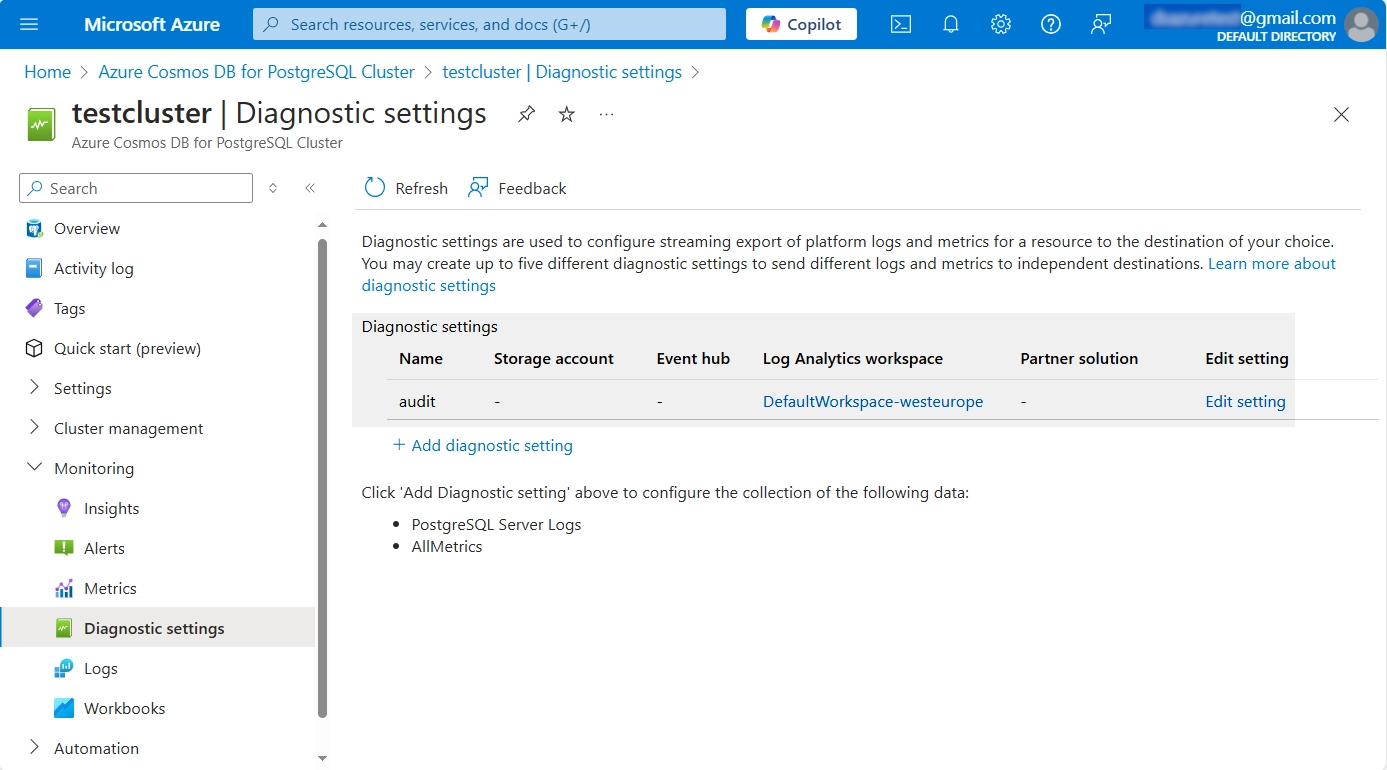
Let’s look at the audited information for the sample query like the following SELECT:
select * from citus.cosmosdb_tutorial.github_events ge;
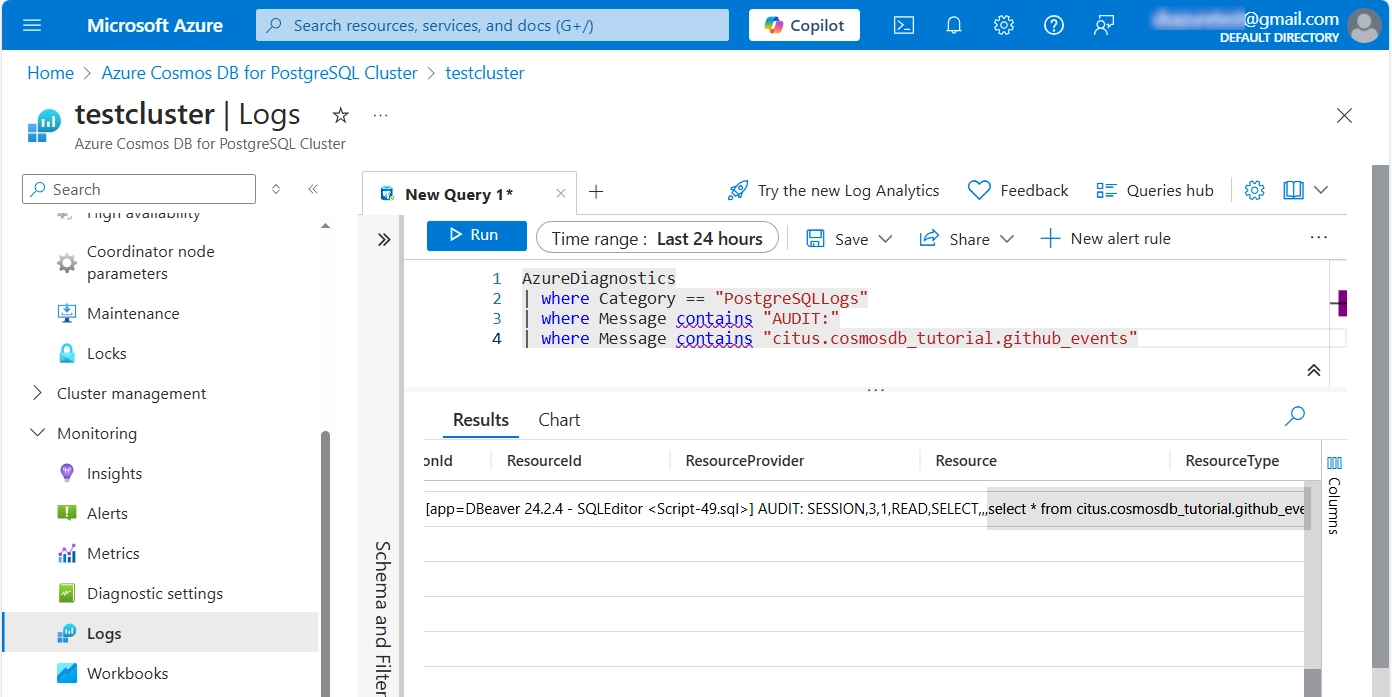
Effective Auditing Solution with DataSunrise
Dedicated third-party solutions offer more comprehensive protection. These tools help organizations meet complex compliance requirements.
DataSunrise’s security system stands out in the market. It provides real-time monitoring and advanced threat detection. The platform seamlessly integrates with CosmosDB for PostgreSQL.
Implementing database auditing in CosmosDB for PostgreSQL follows a structured three-step process. First, create your CosmosDB PostgreSQL instance. Next, configure an Audit Rule with customizable filters and comprehensive monitoring parameters to ensure robust security coverage. Finally, access and analyze your audit results through the Transactional Trails interface, where all captured database activities are displayed in a detailed, searchable format.
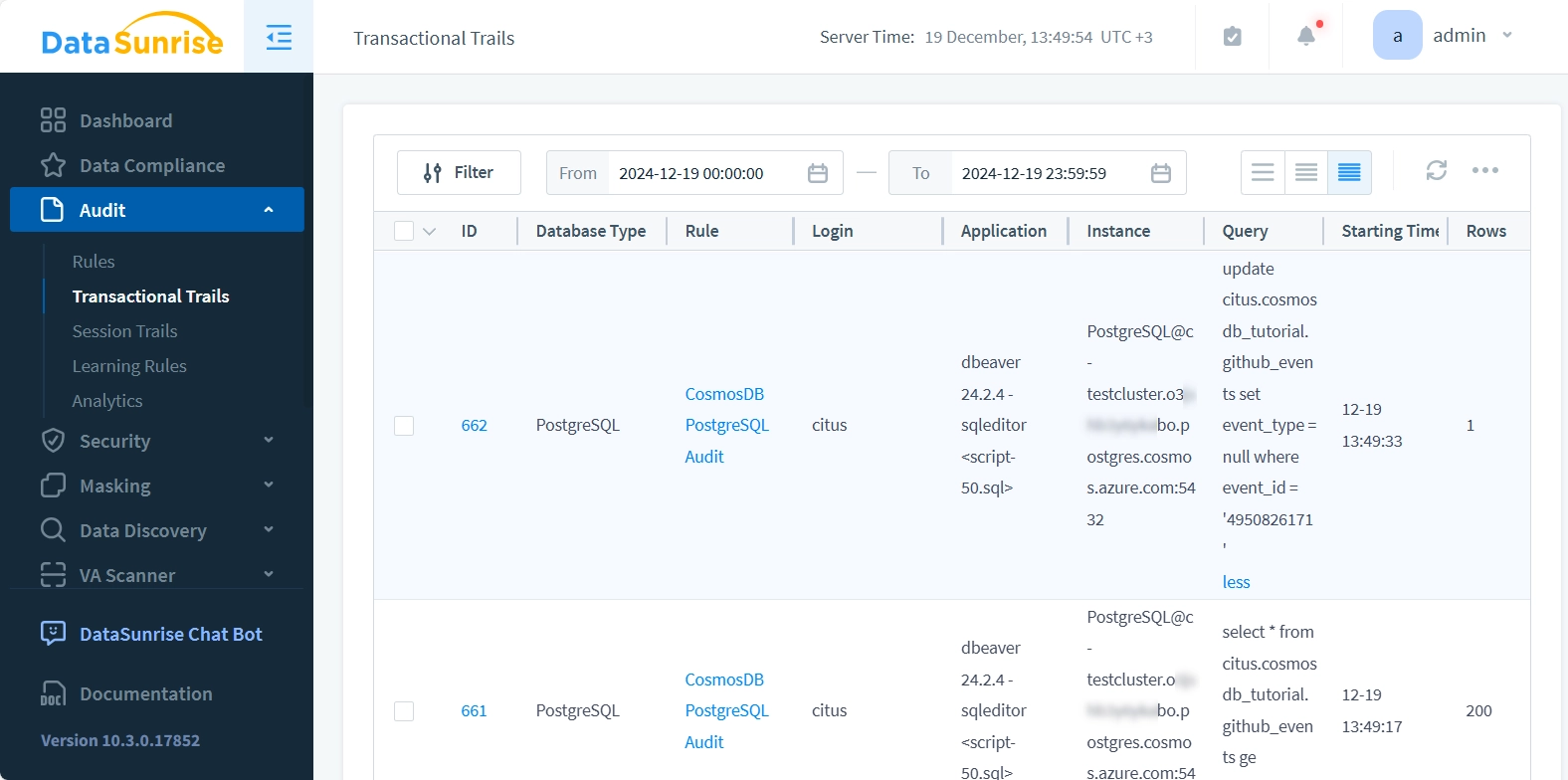
Before configuring audit rules, running a sensitive data discovery scan is recommended. This first step helps find important data that needs protection. It allows for careful setup of audit and data masking rules. This ensures the best security and data compliance.
Advanced Features for Enhanced Security
Modern auditing tools use artificial intelligence and machine learning. These technologies help identify unusual patterns and potential threats. They also streamline the process of sensitive data discovery.
DataSunrise employs learning rules and ML-based user behavior analysis. Data Discovery feature helps organizations quickly identify sensitive data requiring protection. The system adapts to new threats and evolving security requirements.
Compliance and Regulatory Considerations
Organizations must comply with various data protection regulations. Proper auditing helps meet these requirements effectively. It provides necessary documentation and proof of compliance.
DataSunrise supports uniform auditing across multiple database platforms. This consistency helps organizations maintain compliance across their entire infrastructure.
Summary and Future Outlook
Database auditing in CosmosDB for PostgreSQL remains crucial for data security. Organizations need comprehensive solutions to protect sensitive information. Combining native tools with specialized security platforms provides optimal protection.
DataSunrise leads the industry with cutting-edge database security solutions. Our platform offers comprehensive features including advanced auditing, intelligent data discovery, and vulnerability assessment. These tools help organizations maintain robust security while ensuring regulatory compliance.
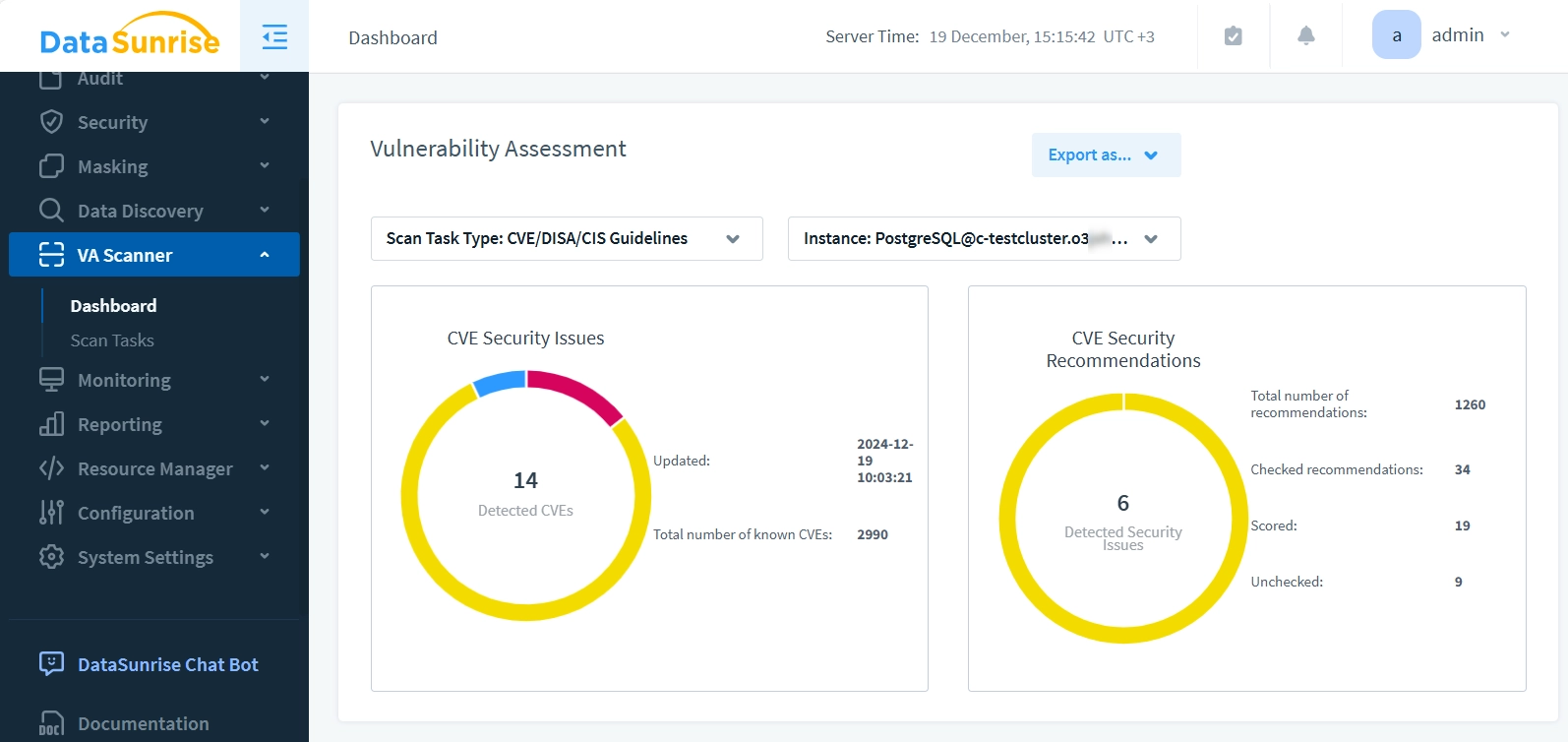
Experience the power of DataSunrise’s security solutions firsthand. Visit our website at datasunrise.com for an online demo and discover how we can enhance your database security infrastructure.
